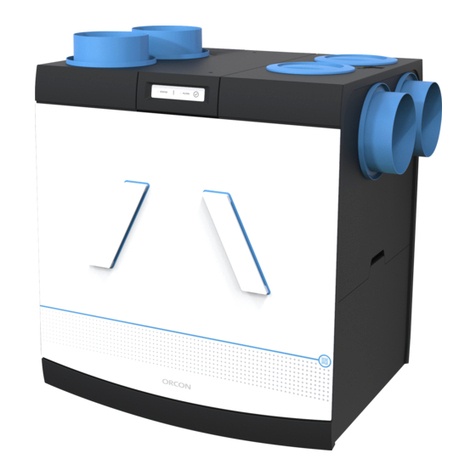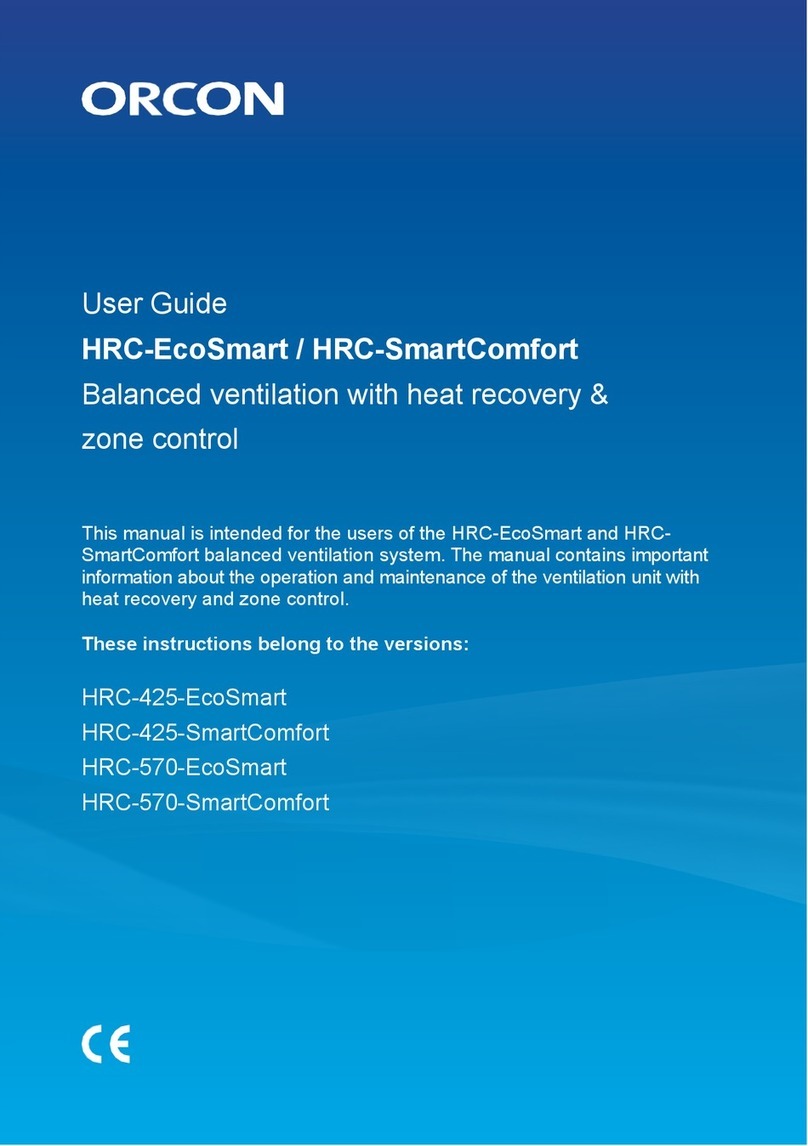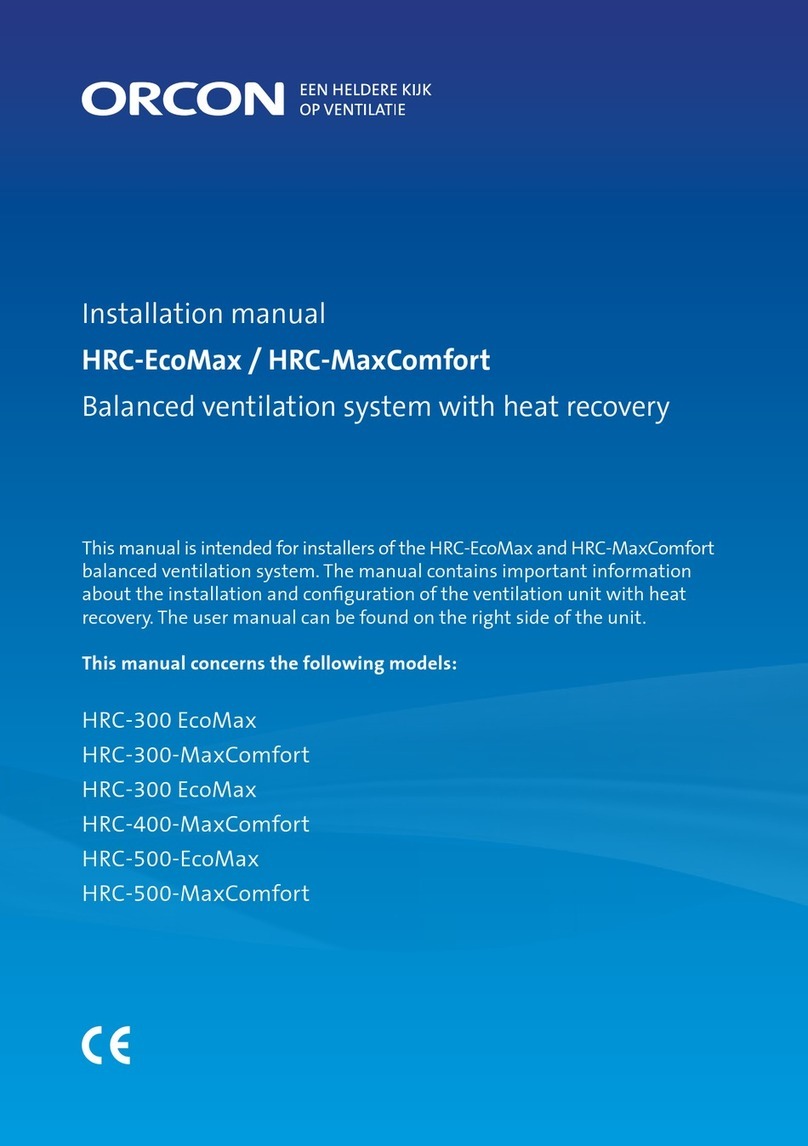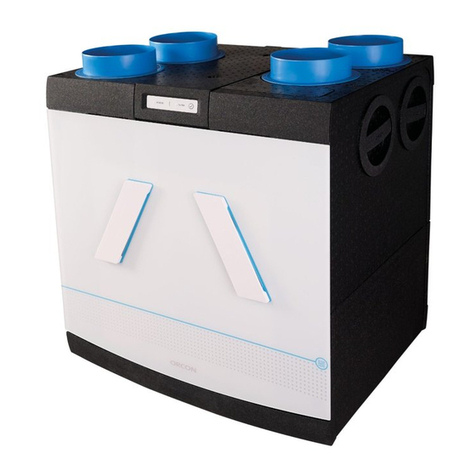
Table of Contents
1. Safety page 2
2. Installing the MVS-15RH domestic ventilator. page 3
3. Electrical installation page 6
4. Adjustment of air volume page 7
5. Conguration en pairing page 10
6. Service and maintenance page 12
7. Technical data page 15
8. Guarantee page 17
9. EC declaration of conformity page 17
10. Installer’s installation report page 18
1. Safety
Read this manual carefully before you mount or use the
device. The following icons are used in this manual.
Indicates the risk that the device will be damaged
if the instructions in this manual are ignored.
Indicates electrical voltage.
1. Only a professional installer may install, connect,
commission and maintain the device unless otherwise
specied in this document;
2. The installation of the device must be performed in
accordance with the general and locally applicable
construction, safety and installation instructions of the
municipality and power company;
3. When performing work on the device, ensure that it
is disconnected from the power supply and cannot
be accidentally reconnected. Bear in mind that after
disconnection from the power supply, the motor will
keep running for approx. 20 seconds.
4. The device is only suitable for a 230 V 50 Hz connection;
5. Modication of the device or the specications listed
in this document is not permitted;
6. The device is only suitable for residential buildings and
not for industrial use, such as swimming pools or saunas;
7. The device cannot be opened without the use of tools,
see Chapter 5;
8. This ventilation device creates negative air pressure in
thehome.Itisimportanttoensurethatnoexhaustgases
from a replace, stove or other combustion devices can
be sucked into the home. It is important that an outside
2































